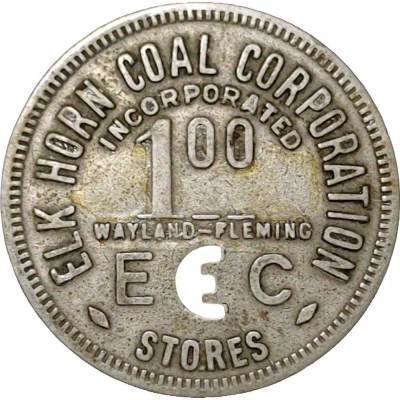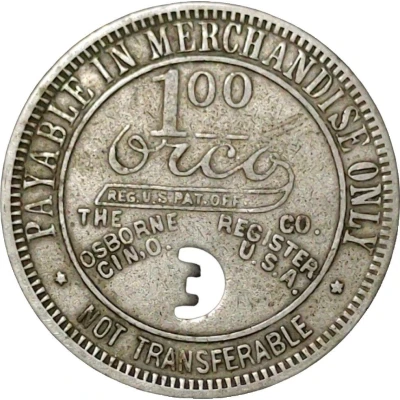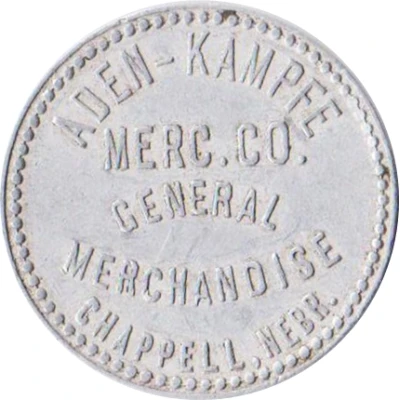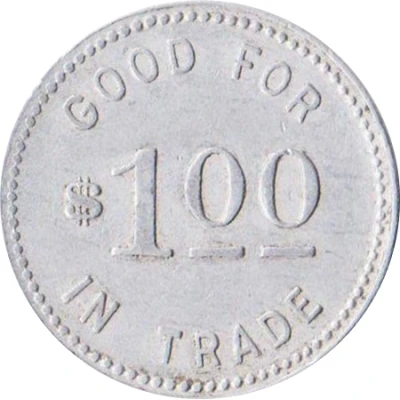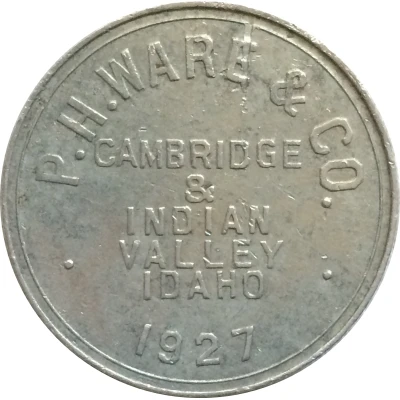
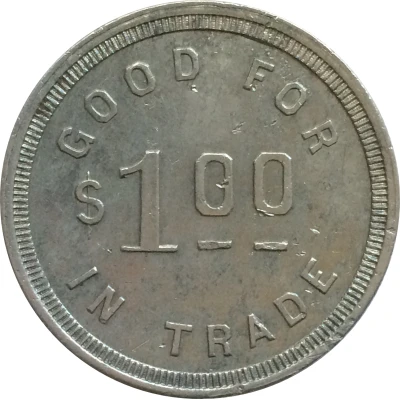

© Jade Jackal
1 Dollar - P. H. Ware and Co. Cambridge and Indian Valley, Idaho
1927 year| Aluminium | - | 38 mm |
| Location | United States |
|---|---|
| Period | Federal republic (1776-date) |
| Type | Trade tokens › Business tokens |
| Year | 1927 |
| Value | 1 Dollar (1 USD) |
| Currency | Dollar (1785-date) |
| Composition | Aluminium |
| Diameter | 38 mm |
| Shape | Round |
| Technique | Milled |
| Demonetized | Yes |
| Updated | 2024-11-14 |
| Numista | N#76411 |
|---|---|
| Rarity index | 97% |
Reverse
Value of token in trade.
Script: Latin
Lettering:
GOOD FOR
$1.00
IN TRADE
Edge
Plain
Comment
The valley Cambridge is in was crossed by the wagon trail lead by Tim Goodale in 1868, the train camped in the area while the men build a steep, switchback road over the mountains and down into the Snake River to Brownlee Ferry. The settlement that grew up in the area was called Salubria, because of the fair weather, river and fertile plains.Cambridge was incorporated in 1900 next to the existing town of Salubria because of a land dispute with the PI & N Railroad. Land owners wanted sell their land to the railroad for more than the railroad wanted to pay. Because Salubria was the supply center for the surrounding mines, tribes and agricultural areas they thought they had the bargaining power to get more money out of the railroad company. The company purchased land on the west side of the Weiser River, completely bypassing Salubria. The new town flourished because of the railroad and eventually Salubria was absorbed into the surrounding Cambridge community.
Indian Valley was named because it was used as a wintering area by the local Shoshoni Tribes.
